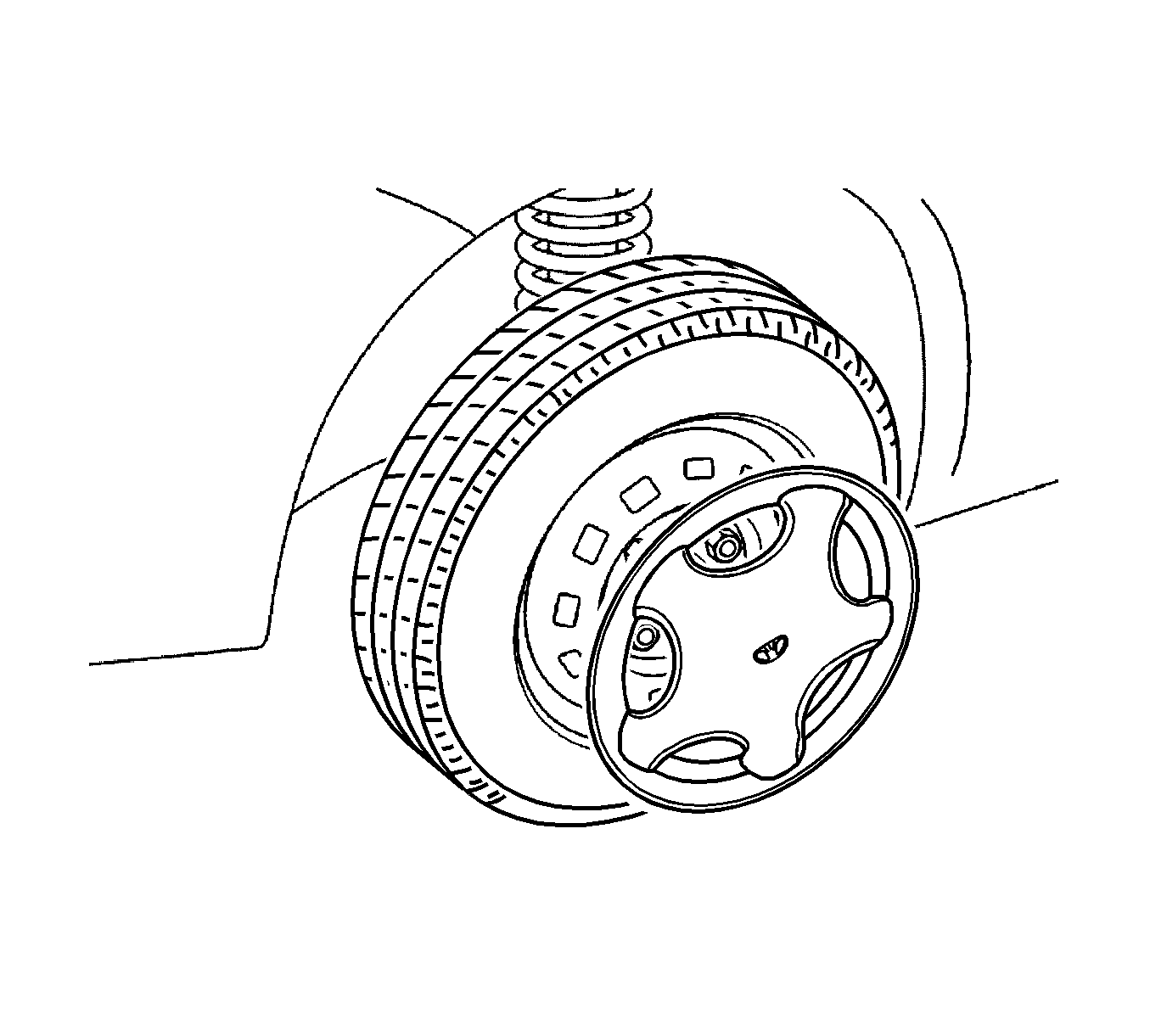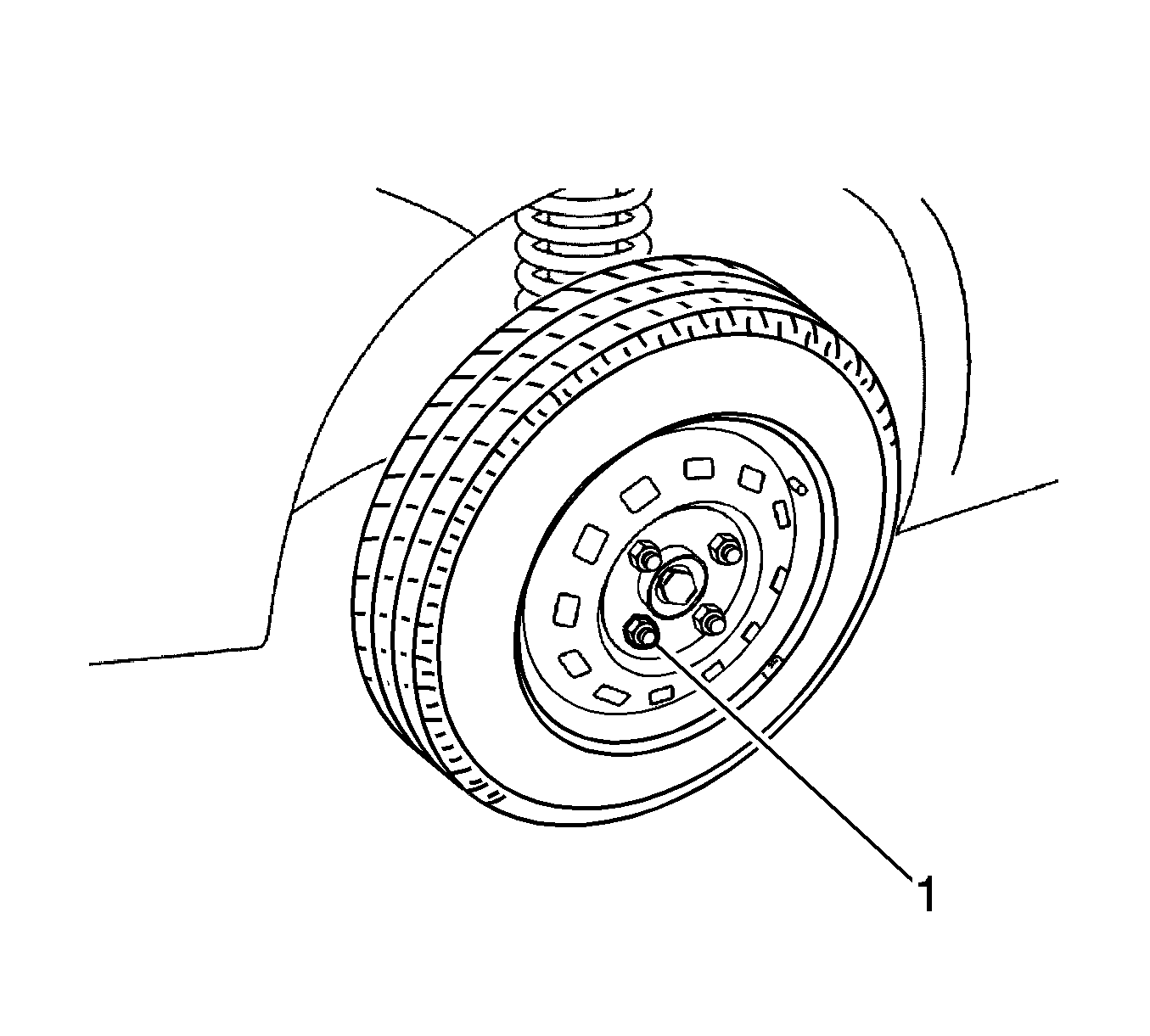Removal Procedure
- Remove the wheel cover on the vehicle equipped with steel wheel.
- Loosen the wheel nuts.
- Raise and suitably support the vehicle. Refer to Lifting and Jacking the Vehicle.
- Remove the wheel nuts.
- Remove the wheel.

Caution: Refer to Fastener Caution in the Preface section.

Caution: NEVER use heat to loosen a tight wheel. It can shorten the life of the wheel, wheel nuts and wheel bearings. Excessive force, such as hammering the wheel or tire, can also cause damage and is not recommended. Slight tapping of the tire side wall, such as with one's hand or a rubber mallet, is normally acceptable.
Caution: Removing the wheel may be difficult because of foreign materials or a tight fit between the wheel and the hub/rotor. Slightly tap the tire side wall with a rubber mallet in order to remove the wheel. Failure to follow these instructions may result in damage to the wheel.
These wheels can be removed using the following methods:
| 5.1. | Retightening the wheel nuts on the affected wheel and then loosening the wheel nuts by 2 turns. |
| 5.2. | Lowering the vehicle and rocking it from side to side as hard as possible, using one or more person's body weight to loosen the wheel. |
| 5.3. | Raising the vehicle and removing the wheel. |
Warning: If penetrating oil gets on the vertical surfaces between the wheel and the rotor or drum, it could cause the wheel to work loose as the vehicle is driven, resulting in a loss of control and an injury accident.
Penetrating oil is not effective in removing tight wheels. If it is used, however, apply it sparingly and only to the wheel's centerhole area.
Installation Procedure
- Mount the wheel.
- Install the wheel nuts (1) in a diagonal pattern.
- Lower the vehicle.
- Tighten the wheel nuts in a diagonal pattern and tighten to 100 N·m (74 lb ft).

Warning: Before installing the wheels, remove any buildup of corrosion on the wheel mounting surface and brake drum or disc mounting surface by scraping and wire brushing. Installing wheels with poor metal-to-metal contact at the mounting surfaces can cause wheel nuts to loosen. This can cause a wheel to come off when the vehicle is moving, causing loss of control and possibly personal injury.
Note: Do not tighten the wheel nuts yet.
Caution: Refer to Fastener Caution in the Preface section.
